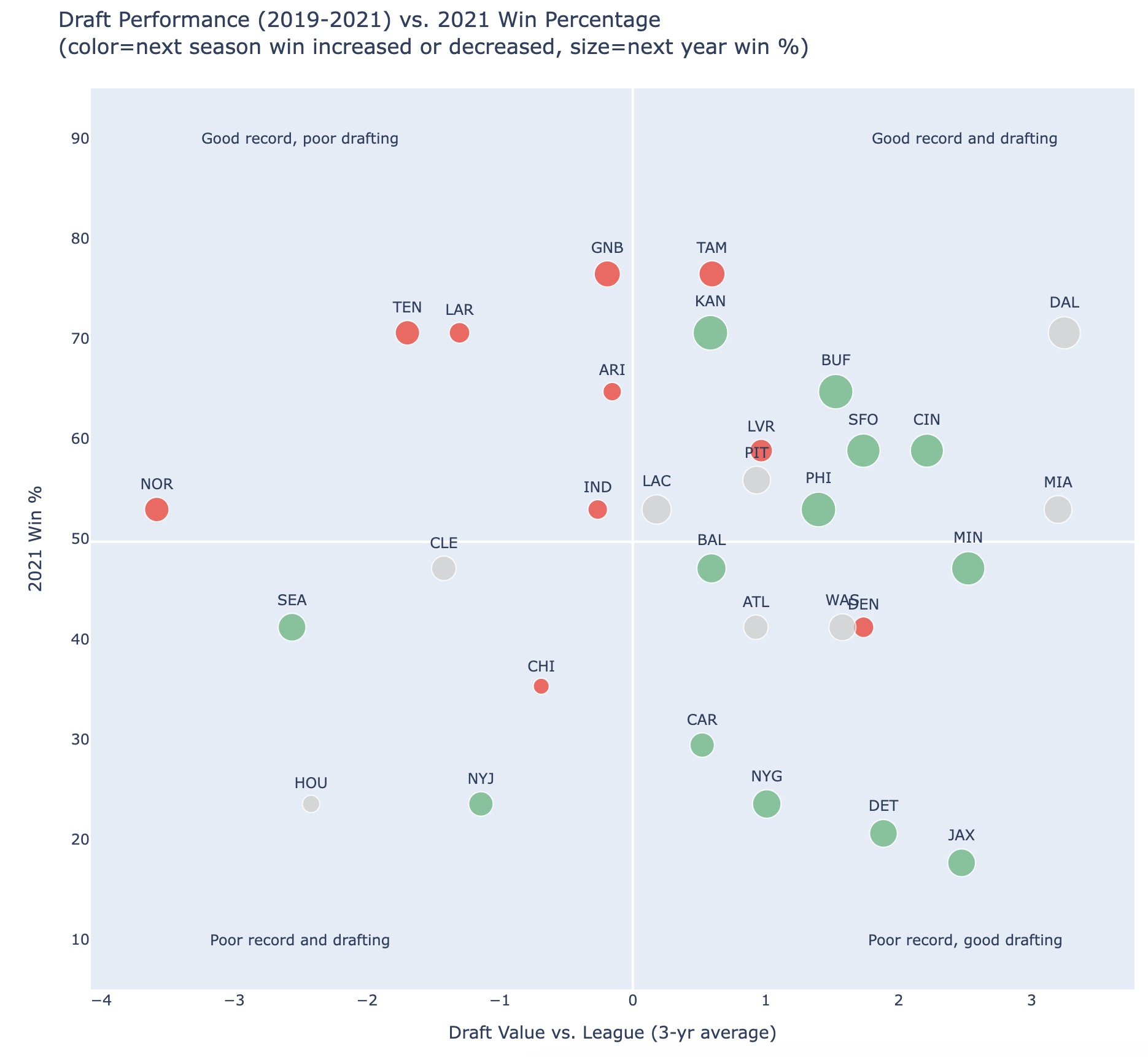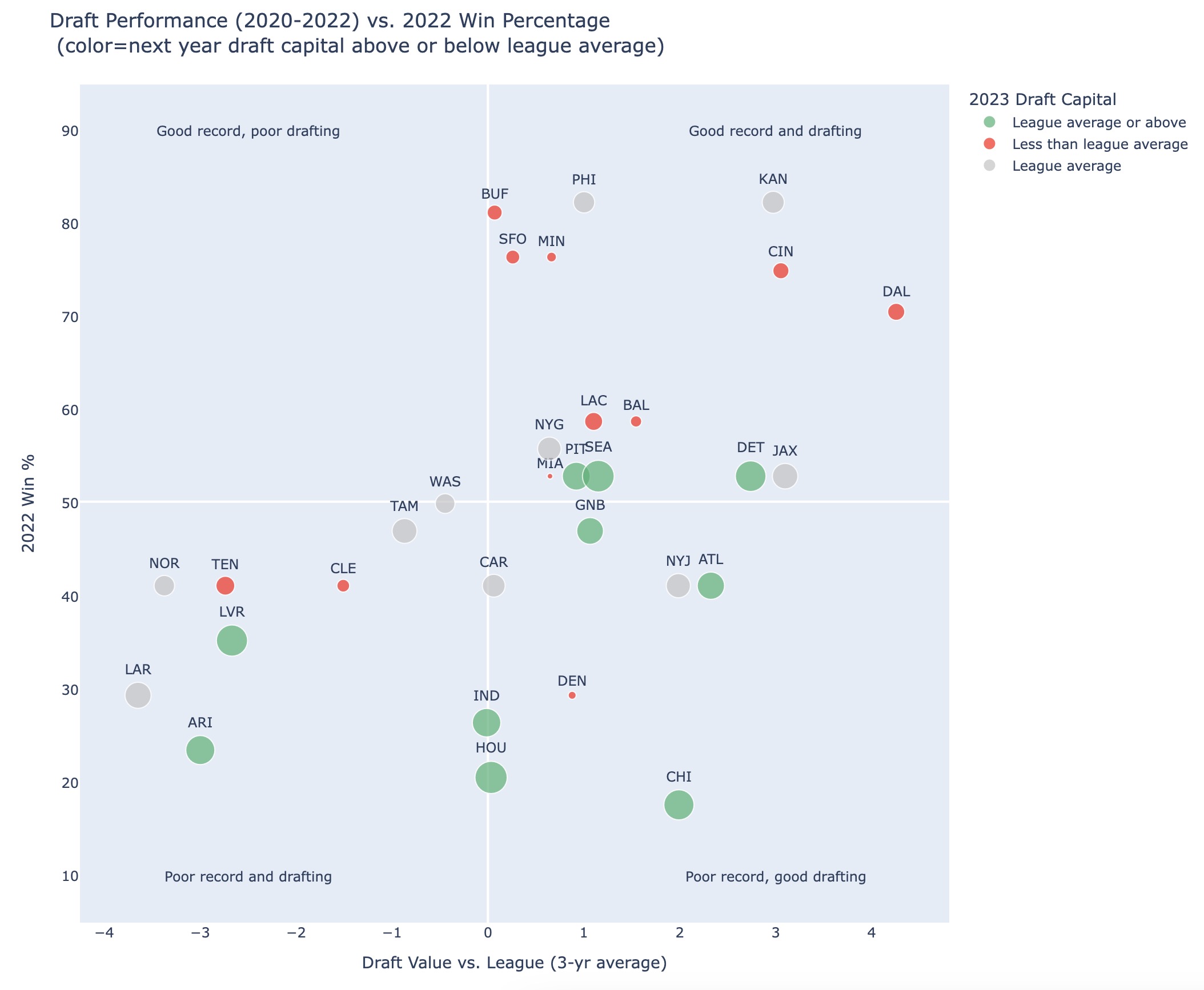
Again, a lot goes into each team's story (injuries, adding or losing a QB, etc.) but it is interesting that the teams that got worse (the red teams) are generally teams that hadn't drafted well over a several year period but were still winning. And the teams that improved (green) are almost exclusively ones that drafted better than league average. The exceptions are few:
- Tampa and Denver who both had a big drop off at QB
- Seattle improved with the top rated 2022 draft (and one of the best drafts over the past 5 years) and improved QB play from Geno Smith after trading Russ
- The Jets bounced from a really low point, going from 4 wins to 7 wins, with the 3rd best rated draft in 2022, adding two difference makers in Sauce and Garrett Wilson
- The Raiders had one of the worst 2022 drafts (26th in the league) and fell apart with their QB not finishing the season
